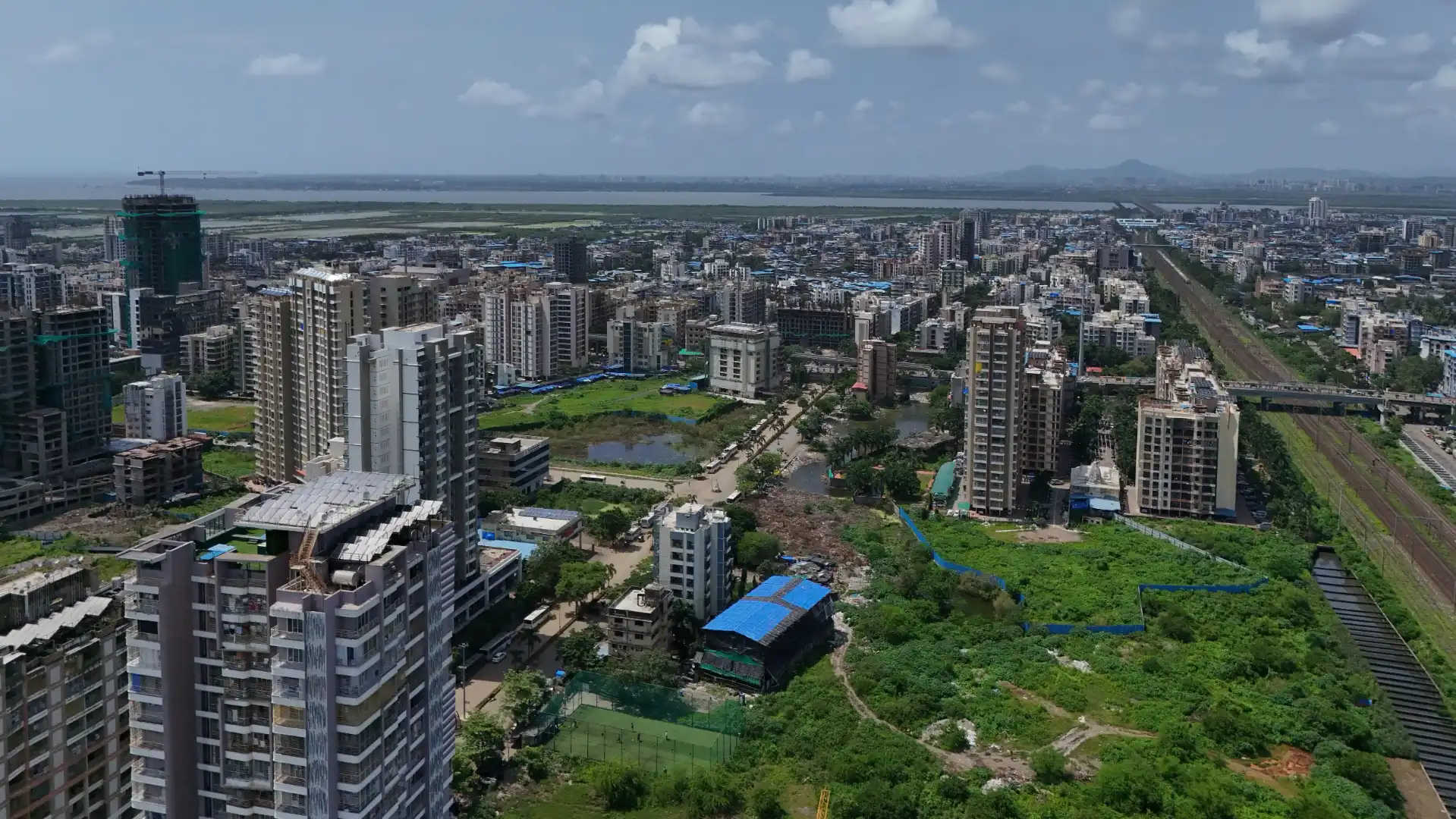Table of Content
Introduction
Remote working has revolutionized the way businesses operate globally, and India is no exception. With the rise of technology and the need for flexible work environments, the work-from-home culture has taken center stage. This shift, accelerated by the COVID-19 pandemic, is having a profound impact on various sectors, with real estate being one of the most affected. The demand for properties has changed, and investors are beginning to explore new avenues, reshaping the landscape of real estate investment in India. In this article, we will explore how remote working is influencing real estate investment trends, the changing dynamics of urban and suburban markets, and the opportunities this presents for investors.
The Emergence of Remote Working in India
Remote working, once a niche concept, gained unprecedented momentum during the global pandemic. Companies worldwide, including in India, adopted flexible working arrangements to ensure the safety and well-being of their employees. What started as a temporary solution soon became a long-term reality, with many organizations embracing hybrid or fully remote work models. This shift has caused a ripple effect across industries, particularly in real estate, where changing consumer behavior is driving new trends.
Shift in Residential Real Estate Preferences
The rise of remote working has led to significant changes in how and where people want to live. With fewer people commuting to offices daily, there has been a noticeable shift in residential preferences. The demand for spacious homes, often in suburban or semi-urban areas, has surged as employees seek properties that accommodate their new work-from-home lifestyles.
1. Increased Demand for Spacious Homes
Homes with extra rooms or dedicated office spaces are becoming increasingly desirable. Homebuyers are prioritizing properties that provide comfort and functionality, especially since their homes now serve as both living and working spaces. Properties with home offices, better ventilation, and outdoor areas such as gardens or balconies are experiencing a surge in demand. This trend is particularly prominent in Tier 2 and Tier 3 cities, where space is more affordable.
Also Read: Student housing: The next big real estate asset class?
2. Migration to Suburbs and Peripheral Areas
Another emerging trend is the migration of working professionals from crowded urban centers to more peaceful and spacious suburban or peripheral areas. With the freedom to work from anywhere, many are opting for homes in the outskirts of major cities or smaller towns where property prices are lower, and the quality of life is perceived to be better. This shift is creating new opportunities for real estate developers and investors who are now focusing on developing residential projects in these previously overlooked regions.
3. Influence on Rental Markets
The demand for rental properties is also shifting. In the pre-pandemic era, proximity to workplaces was a primary factor driving rental demand in urban centers. However, with remote working becoming more common, renters are now prioritizing affordability, space, and quality of life over location. This shift has led to a decline in demand for rental properties in central business districts while boosting the rental market in suburban and semi-urban areas.
Commercial Real Estate Reimagined
While the residential sector is witnessing notable shifts, the commercial real estate market in India is also undergoing transformation due to the rise of remote working. The reduced need for physical office spaces has challenged traditional notions of commercial real estate investment.
1. Decline in Office Space Demand
With many companies adopting hybrid or fully remote work models, the demand for large office spaces has seen a decline. Organizations are reassessing their office space requirements, leading to an increase in flexible workspace solutions like co-working spaces and shared offices. This trend has prompted investors to reconsider their investments in traditional commercial properties and explore opportunities in flexible and adaptive workspace solutions.
2. The Rise of Co-Working Spaces
Co-working spaces are becoming increasingly popular as companies seek flexible and cost-effective office solutions. Startups, freelancers, and even established organizations are opting for co-working spaces to provide employees with a collaborative work environment without the commitment of long-term leases. This trend is reshaping the commercial real estate market, with investors now focusing on co-working spaces as a lucrative investment opportunity.
3. Adaptive Reuse of Commercial Properties
The decline in demand for traditional office spaces has prompted the adaptive reuse of commercial properties. Many commercial buildings are being repurposed for alternative uses such as residential projects, retail spaces, or mixed-use developments. This adaptive reuse trend is opening new doors for real estate investors who can capitalize on the changing needs of the market by transforming underutilized commercial properties into profitable ventures.
The Impact on Real Estate Investment Strategies
Remote working is not only changing the dynamics of the real estate market but also influencing investment strategies. Investors are now taking into account the evolving needs of homebuyers and tenants, as well as the changing demand for office spaces.
1. Focus on Tier 2 and Tier 3 Cities
The migration of working professionals to Tier 2 and Tier 3 cities is driving real estate investment in these regions. Investors are recognizing the potential for growth in smaller cities, where property prices are lower, and demand for housing is rising. This trend is creating opportunities for investors to tap into emerging markets and diversify their portfolios.
2. Investment in Mixed-Use Developments
As the demand for traditional office spaces declines, mixed-use developments that combine residential, commercial, and retail spaces are gaining popularity. Investors are increasingly focusing on projects that offer a blend of living, working, and recreational spaces, catering to the changing needs of consumers in the remote working era. These developments provide a more sustainable and profitable investment opportunity by diversifying the risk associated with a single property type.
3. Emphasis on Sustainability and Technology
Sustainability and technology are becoming key considerations for real estate investors in the remote working era. Homes and office spaces equipped with energy-efficient features, smart technology, and sustainable designs are in high demand. Investors who prioritize eco-friendly and technologically advanced properties are likely to attract environmentally conscious buyers and tenants, making these features a critical factor in future real estate investment strategies.
Challenges and Opportunities for Real Estate Developers
While remote working presents numerous opportunities for real estate investment, it also poses challenges for developers. Adapting to the changing demands of the market requires innovative thinking and a willingness to embrace new trends.
Also Read: Budget 2024 brings promising changes to real estate sector
1. The Need for Flexible and Adaptive Designs
Real estate developers must focus on creating flexible and adaptive designs that cater to the evolving needs of homebuyers and tenants. Properties with multifunctional spaces that can serve both as homes and offices are becoming essential in the remote working era. Developers who can incorporate these features into their projects will be well-positioned to capitalize on the growing demand for flexible living and working spaces.
2. Addressing Infrastructure and Connectivity Challenges
The migration of working professionals to suburban and semi-urban areas presents infrastructure and connectivity challenges. Developers must work closely with local governments and authorities to ensure that these areas have the necessary infrastructure, such as reliable internet connectivity, transportation networks, and access to essential services. Overcoming these challenges will be crucial in ensuring the long-term success of real estate developments in emerging markets.
3. The Role of Government Policies
Government policies and regulations play a significant role in shaping the real estate market in India. The government's focus on affordable housing, smart cities, and infrastructure development is creating opportunities for developers and investors to tap into new markets. Understanding and aligning with these policies will be essential for developers and investors looking to succeed in the remote working era.
Conclusion
The rise of remote working is reshaping the real estate landscape in India, creating new opportunities and challenges for investors and developers alike. As the demand for spacious homes, flexible office spaces, and mixed-use developments continues to grow, the real estate market is evolving to meet the changing needs of consumers. Investors who can adapt to these trends and focus on emerging markets, sustainability, and technology are likely to thrive in the remote working era. While challenges such as infrastructure development and government regulations remain, the future of real estate investment in India looks promising as the country embraces the new normal of remote working.
Also Read: How to effectively use online platforms and offline networking for real estate purchases?




_1767164061.webp)


Ans 1. Remote working has shifted the demand towards spacious homes in suburban areas and decreased the demand for traditional office spaces, influencing investment strategies in both residential and commercial real estate.
Ans 2. The key trends include increased demand for spacious homes with dedicated workspaces, migration to suburban areas, and a shift in rental demand towards affordable and spacious properties outside urban centers.
Ans 3. Commercial real estate is adapting through the growth of co-working spaces, the decline in demand for large office spaces, and the adaptive reuse of commercial properties for alternative purposes.
Ans 4. Tier 2 and Tier 3 cities are benefiting from the remote working trend as more professionals migrate to these areas in search of affordable, spacious homes.
Ans 5. Mixed-use developments combine residential, commercial, and retail spaces in one project. They are gaining popularity as they offer diverse spaces that cater to the remote working lifestyle, providing convenience and sustainability.